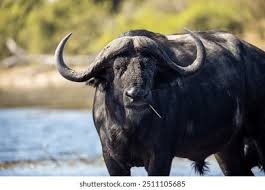The dairy industry is a significant contributor to global agriculture, with cow milk being the most commonly consumed dairy product worldwide. However, water buffalo milk is gaining attention due to its nutritional benefits and higher profitability in certain markets. This report compares the profitability of water buffalo milk versus cow milk, considering factors such as production costs, market demand, nutritional value, and economic viability.
Table of Contents
1. Nutritional and Market Value
1.1 Nutritional Differences
- Water Buffalo Milk:
- Higher fat content (7-8%) compared to cow milk (3-4%).
- More protein (4.5% vs. 3.2% in cow milk).
- Richer in calcium, iron, and phosphorus.
- Lower cholesterol levels.
- Ideal for producing high-value dairy products like mozzarella, yogurt, and ghee.
- Cow Milk:
- Lower fat and protein content but widely accepted.
- Easier to digest for lactose-intolerant individuals (A2 milk variants).
- Standardized for mass-market dairy products like cheese, butter, and milk powder.
1.2 Market Demand and Price
- Water Buffalo Milk:
- Niche market with higher prices due to premium dairy products (e.g., authentic Italian mozzarella di bufala).
- Growing demand in health-conscious and gourmet markets.
- Price per liter can be 2-3 times higher than cow milk.
- Cow Milk:
- Mass-market demand with stable but lower prices.
- Commodity pricing subject to global dairy market fluctuations.
- Lower profit margins but higher sales volume.
2. Production Costs and Yield
2.1 Feed and Maintenance
- Water Buffalo:
- Require more feed (higher roughage intake) but can thrive on lower-quality forage.
- More resistant to diseases, reducing veterinary costs.
- Longer productive lifespan (15-20 years vs. 10-12 years for cows).
- Higher initial investment per animal.
- Cows (Dairy Breeds like Holstein):
- Require high-quality feed for optimal milk production.
- More prone to diseases (e.g., mastitis), increasing medical costs.
- Shorter productive lifespan.
- Lower initial cost per animal but higher maintenance.
2.2 Milk Yield
- Water Buffalo:
- Lower daily yield (5-8 liters/day) compared to high-yield dairy cows (20-30 liters/day).
- Higher milk solids mean more cheese/butter per liter.
- Cow:
- Higher daily milk output, making it more suitable for large-scale dairy operations.
- Lower milk solids require more processing for cheese/butter.
3. Profitability Analysis
3.1 Revenue Potential
- Water Buffalo Milk:
- Higher price per liter (e.g., $1.5-$3 vs. $0.5-$1 for cow milk).
- Premium dairy products (mozzarella, yogurt) fetch 50-100% higher prices.
- Lower competition in niche markets.
- Cow Milk:
- High-volume sales but lower margins.
- Dependent on commodity prices, which can fluctuate.
3.2 Cost Efficiency
- Water Buffalo:
- Lower veterinary costs.
- Can graze on marginal lands unsuitable for cows.
- Higher milk fat/protein reduces processing costs for cheese/butter.
- Cow:
- Higher feed and medical costs.
- Requires more intensive farming practices.
3.3 Return on Investment (ROI)
- Water Buffalo Farming:
- Slower ROI due to lower milk yield but higher product value.
- Long-term profitability is better due to premium pricing.
- Cow Dairy Farming:
- Faster ROI due to high milk volume.
- Vulnerable to price drops in the dairy market.
4. Regional Suitability
- Water Buffalo:
- Thrives in tropical/subtropical climates (India, Pakistan, Italy, Brazil).
- Requires access to water for wallowing.
- Cow:
- Adaptable to various climates (dominant in the U.S., Europe, New Zealand).
- More suited to temperate regions.
5. Challenges
5.1 Water Buffalo Farming Challenges
- Limited consumer awareness outside traditional markets.
- Slower reproduction rates.
- Requires specialized processing for high-value dairy products.
5.2 Cow Milk Farming Challenges
- Overproduction leads to price volatility.
- High competition among dairy farmers.
- Environmental concerns (methane emissions).
6. Future Trends
- Rising demand for organic and A2 milk (both buffalo and certain cow breeds).
- Buffalo milk products gaining popularity in Western markets.
- Plant-based milk competition affecting both industries.
Here are 10 frequently asked questions (FAQs) about water buffalo:
1. What is a water buffalo?
- A water buffalo is a large bovine animal, primarily found in Asia, Europe, and Africa. There are two main types: the river buffalo (common in South Asia and Europe) and the swamp buffalo (found in Southeast Asia).
2. What do water buffaloes eat?
- They are herbivores, mainly grazing on grasses, aquatic plants, and agricultural byproducts like rice straw.
3. Why are they called “water” buffaloes?
- They are often found in or near water (rivers, swamps, or mud holes) to cool off, avoid pests, and aid digestion.
4. How long do water buffaloes live?
- On average, they live 18–25 years, though some can live longer with proper care.
5. What are water buffaloes used for?
- They are used for milk, meat, leather, and as working animals (plowing fields, transporting goods).
6. How much milk does a water buffalo produce?
- A dairy buffalo can produce 5–10 liters per day, with some high-yielding breeds (like Murrah) producing up to 15 liters.
7. Are water buffaloes aggressive?
- They are generally docile but can become aggressive if threatened, especially males (bulls) during mating season.
8. What is the difference between a water buffalo and a regular cow?
- Water buffaloes are larger, have curved horns, thicker skin, and are more adapted to wet environments compared to domestic cattle.
9. Can water buffaloes survive in cold climates?
- They prefer warm, tropical climates but can adapt to cooler regions if provided shelter and proper care.
10. Why is buffalo milk popular?
- It has higher fat, protein, and calcium than cow’s milk, making it ideal for cheese (like mozzarella di bufala) and yogurt.

